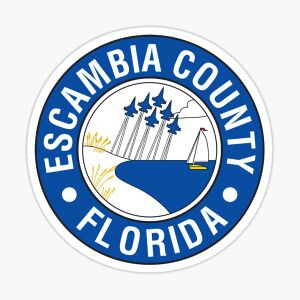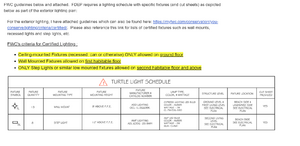Escambia
Municipalities
Santa Rosa Island Authority & Pensacola Beach
Town of Century
Resources
Escambia County Clerk of Court
Escambia County Permit Application
| Zoning | Code | Front | Side | Rear |
| Agricultural | AGR | 40 | 40 | |
| Rural Residential | RR | 40 | 40 | |
| Rural Mixed-Use | RMU | 40 | 40 | |
| Low Density Residential | LDR | 25 | 25 | |
| Low Density Residential Mixed-Use | LDMU | 20 | 20 | |
| Medium Density Residential | MDR | 20 | 20 | |
| High Density Residential | HDR | 20 | 15 | |
| High Density Mixed-Use | HDMU | 20 | 15 |
Permit Requirements:
- Parcel Number and 911 Address
- City approval if in limits of SRIA or Town of Century.
- Notice of Commencement
- Florida Product Approvals
- Plot Plan by CT Homes
- Engineer stamped plans with truss pages
- Septic Permit (850-590-5500)
- Water/Septic Tap Fee Receipts / Water Management Permits
- Energy Forms
- Termite Treatment Letter
- Stormwater Erosion and Sediment Controls During Construction
- Preliminary Elevation Certificate (for properties in a flood zone)
- Form Board Certificate (for properties in a flood zone)
- Final Elevation Certificate (for properties in a flood zone)
- VZone Certification (if in designated V-Zone flood area)
- No Rise certificate if in Floodway.
Notes:
- Fabric shield is required for all openings (windows and doors).
- 30# double layer underlayment required for roof decking.
- All exterior materials must be approved by the state building authority- check Product Approval portal.
- General Land Development Code
Perdido Key Beach Mice | Mouse permit information AKA Incidental Take Permit (ITP) |
What is required as part of my PKBM permit?
̽Only a certain amount of permits are issued. First come first serve. Zoning MDR-PK (Current) MU-PK (Only Future)
Before Authorization of Coverage (Beach Mouse Permit) can be granted, the following are required:
- Habitat Management Plan detailing property information, impact minimization, and environmental mitigation measures as required by the Habitat Conservation Plan.
- Beach Mouse Land Disturbance Permit & Fees
- Impact fee Permanent impact acreage X 100,000 dollars
- Ex Lot approx 0.1333 acres X Permanent disturbance area =1,334 Square feet or (0.0306 acres) = 4k rough estimte impact fee
- Beachmouse annual assesment = 201.00 dollars
- Impact fee Permanent impact acreage X 100,000 dollars
- Full site plans, that include all proposed impacts, lighting fixtures and locations, general landscaping, and other environmental mitigation/design features
- Exterior Lighting: All exterior lights proposed for the seaward or shore perpendicular side of the structure should be wellshielded, full cut-off, downward directed fixtures with a long-wavelength light source (wavelength readings of 560 nanometers (nm) or higher). If the exterior fixtures on the landward side of the structure are not visible directly or indirectly from the beach, they are only required to be downward directed.
- Dark Sky is a term also used for wildlife friendly, but applies to a broader range of fixtures and may not meet requirements
- Long-wavelength, 560nm or higher
- Amber LED, Orange LED, Red LED, (true red, orange or amber diodes, NOT FILTERS)
- True red neon
- Low Pressure Sodium(LPS) : 18W, 35W
- KEEP IT SHIELDED-Fixtures must be mounted as low as possible to achieve required light levels.
- Bulbs must produce the lowest wattage/lumens necessary for the needed purpose.
- Tinted glass / Turtle Glass- inside to outside light transmittance = 45% or Less
- No interior/Exterior lighting is to be visible from the outside of the house footprint.
- State rules require that tinted glass or film with a visible light transmittance value of forty-five (45) percent or less (inside to outside) must be used on all glass windows, doors and walls within line of sight of the beach, usually the seaward and shore-perpendicular sides of the structure. However, since those rules were passed, there are now better options because of advances in tinting and more information on sea turtle disorientations. Window tints/film with transmittance values lower than 45% are available that are energy efficient, pleasing and easily seen through. The best option for minimizing interior lighting impacts to sea turtles is to use the darkest tint available. Tints with 25 to 30% transmittance are among the most popular and tints as low as 15% have been used successfully. Many local lighting ordinances require that interior lights cannot be visible from the beach; therefore, the use of higher transmittance tints (such as 45%) often requires installation of additional window treatments to achieve compliance with the ordinance.
- Landscaping-
Once all the above have been submitted and approved, an Authorization of Coverage is issued, which allows the property owner to proceed with development. Additional requirements include:
- Two nights of pre-land disturbance PKBM trapping by a qualified technician
- Deed Restrictions signed and recorded with OR book before Building Permit Issuance
- Conservation Easements recorded into OR book before Certification of Occupancy
- HAVE to file conservation easements for remaining undisturbed areas. Never to be developed
Habitat conservation ordiance | Plan | Exterior lighting ordinance | Certified Wildlife Lighting | Lighting workshop 101
Project Design and Construction 4. The Permittee will implement the following exterior lighting restrictions throughout the HCP Area to minimize the effects of artificial lighting on PKBM habitat. a. The Permittee will limit exterior lighting on each project to those areas deemed essential for human health, safety, and welfare. Where essential, install shielded wildlife-friendly lighting in conjunction with current Service standards at the time. b. The Permittee will direct all lighting downward and beachfront lighting shall be directed downward and away from beaches and Gulf waters. c. All windows and glass doors would have the appropriate glass or window tint that only allows 45% light transmittance from inside to outside. d. The Permittee will be responsible for review and approval of each project’s lighting plan. These should be provided on construction phase drawings and maintained for Service review if needed. Each projects’ lighting plan shall be consistent with the Counties’ forthcoming Service approved lighting ordinance. The Service will provide the lighting plan review while the ordinance is being finalized. In such cases, the Service will review requested lighting plans no later than 60 days prior to the commencement of construction. The Service will review for consistency with current lighting requirement within 14 business days from receipt

